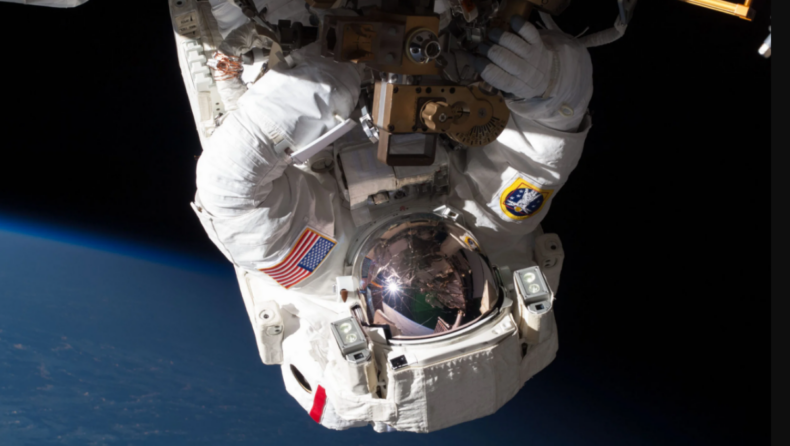Without the protection of the Earth’s atmosphere, astronauts have an increased exposure to high levels of ionizing radiation.
Ionizing radiation, high-energy waves that can take electrons from atoms in the body, bombards Earth every day. Ionizing radiation exposure at high levels can cause radiation sickness and cancer.
Fortunately, our planet’s magnetosphere and atmosphere keep almost all of this radiation from reaching Earth’s surface, which is generated by the sun and galactic cosmic rays from exploding stars.
However, astronauts on the International Space Station (ISS), which is still shielded by the magnetosphere but not by the atmosphere, are exposed to higher levels of ionizing radiation, increasing their chances of acquiring cancer throughout their careers.
The effective dose limit for an astronaut’s career is based on a maximum 3 percent lifetime extra risk of cancer mortality, as defined by NASA in 1989.
That risk is evaluated with a sliding scale based on age and sex, ranging from a lower career limit of 180 millisieverts (mSv) of radiation for a 30-year-old woman to an upper career limit of 700 mSv for a 60-year-old man.
So, why are female astronauts subjected to a lower radiation exposure limit than male astronauts?
- NASA’s lower radiation threshold for female astronauts was based on the following finding, according to R. Julian Preston, a special government employee with the US Environmental Protection Agency’s Radiation Protection division: When women and men were exposed to high levels of radiation for similar periods, women had more than twice the risk of developing lung cancer as men.
- Preston, who serves on committees for the National Council on Radiological Protection and Measurements, told that “it has been generally considered; based largely on the survivors of the atomic bombs in Japan that, particularly for lung cancer, women were more sensitive” to ionizing radiation than men.
- Those rules have had real-world ramifications for people’s careers. Peggy Whitson, the former chief of NASA’s astronaut corps, had to retire in 2018 after reaching her career restriction on radiation exposure at the age of 57, after publicly expressing her dissatisfaction with the radiation limits for female astronauts.
Way Ahead?
- NASA’s radiation standards, on the other hand, are projected to change soon. NASA asked the National Academies of Sciences, Engineering, and Medicine to organize a panel of experts in 2021 to examine the space agency’s plan to raise the career radiation limit for all astronauts of all ages to 600 mSv.
- The restriction was calculated by applying NASA’s cancer risk model to the most vulnerable individuals: early-career women.
- For this group, NASA computed the average risk of exposure-induced death and converted that risk to a dose, which allowed for a significantly broader margin of error than previously.
- The 600 mSv dosage corresponds to the amount of radiation an astronaut would be exposed to over the course of four six-month missions on the International Space Station.
- According to NASA, the average annual dose of radiation received by a person on Earth is roughly 3.6 mSv, compared to 300 mSv in the ISS.
- Preston, who was also vice-chair of the National Academies’ expert council on examining cancer risks for crewed space missions, said the new limit “would minimize the dose for some categories of males, notably older males.” “Women would be able to enjoy a longer career as a result.”
- The committee, which issued its findings in June 2021, was made up of three groups that looked into the risk assessment method, ethical issues, and communication of the new recommendations, in that order.
- “To achieve that equity, women may receive a higher dose than they can now, at a higher exposure than they are allowed now,” Preston added. “We spoke about it for a long time as an ethical issue. It’s a question of striking a balance between the potential impact of a slightly larger dose vs equal career opportunities. NASA, we suggested, might use that method.”
- A waiver on the career exposure limit is included in NASA’s planned plan for lengthier trips, such as a future trip to Mars, which would expose astronauts to an estimated 900 mSv.
- However, that dose is likely lower than the 1,000-mSv career exposure limitations now in place for European, Canadian, and Russian astronauts.
- “If NASA decided that this is a critical mission, and there are certain astronauts who are critical to that mission who would exceed their career exposure, NASA could apply a waiver to that, and it was built into their overall exposure standard,” Preston said. “It’s a hard ethical issue, but it’s required to go to Mars.”
Published by : Aditya Andharia
Edited By : Kritika Kashyap












